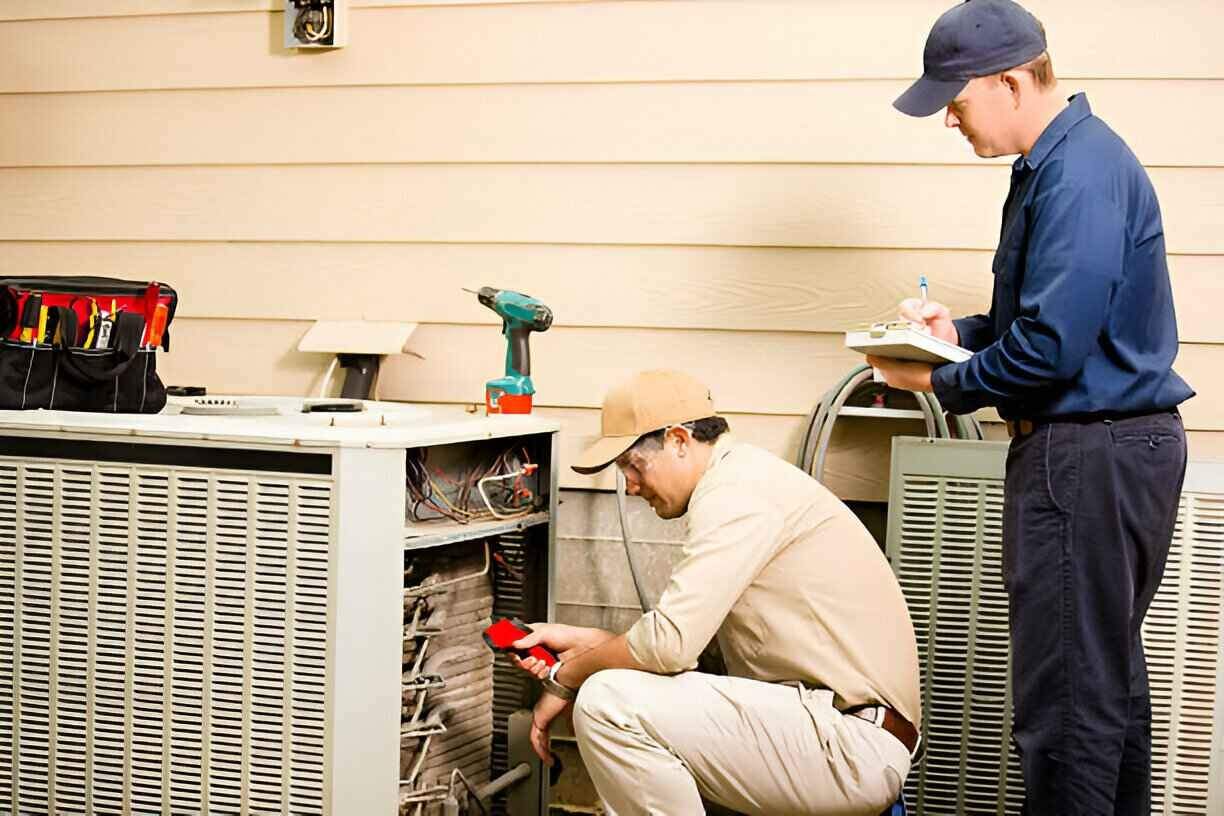AC Replacement in Lake Wales, FL


Why consider AC replacement in Lake Wales, FL
- Long cooling season and high humidity increase run times and accelerate wear on older systems.
- Frequent storms and power fluctuations can cause repeated compressor or electronic failures.
- Older units with low efficiency (low SEER ratings) cost significantly more to operate in Florida heat.
- Replacing an oversized or undersized unit resolves comfort complaints, short cycling, and high energy bills.
Common AC replacement reasons and system types
Common AC replacement issues in Lake Wales, FL include:
- Frequent breakdowns and costly repairs
- Reduced cooling capacity and uneven cooling across rooms
- Rising energy bills and older systems with low SEER efficiency
- Refrigerant leaks or systems using phased-out refrigerants
- Corroded coils or compressor damage after years of salt-free but humid exposure
- Old or leaky ductwork that undermines performance
Typical systems replaced:
- Central split systems (most common in Lake Wales homes)
- Heat pump systems (efficient for mild Florida winters)
- Package units on homes built with different configurations
- Ductless mini-splits for room additions or homes with limited ductwork
System evaluation and right-sizing
A successful replacement begins with a professional evaluation and accurate load calculations:
- On-site inspection: assess existing equipment, ductwork condition, attic insulation, roof shading, and thermostat location.
- Load calculation: perform a Manual J load calculation to determine the correct cooling capacity for your specific home—not just a rough rule of thumb. This avoids oversized units that short cycle or undersized units that run constantly.
- Duct design: use Manual D and airflow measurements to check if ductwork needs repair or resizing to match the new system.
- Indoor air quality needs: assess filtration and ventilation options if pollen, humidity, or odors are concerns.
Right-sizing and proper airflow are as important as the equipment choice for reliable, efficient cooling in Lake Wales homes.
Comparing energy-efficient models
When evaluating replacement options, consider these performance and feature categories:
- SEER rating: higher SEER means better efficiency and lower operating costs over time. For Florida climates, SEER of 15 or higher is common for meaningful savings.
- Variable-speed or inverter compressors: provide smoother temperature control, better humidity management, and higher part-load efficiency.
- Two-stage compressors: improve comfort and reduce short cycling compared to single-stage units.
- High-efficiency coil and corrosion-resistant components: helpful for longevity in humid climates.
- Thermostat compatibility: smart or programmable thermostats help optimize run schedules for energy savings.
Balance upfront equipment efficiency with long-term operating costs, factoring in local cooling hours for Lake Wales.
Removal and disposal of old equipment
Proper removal includes:
- EPA-compliant refrigerant recovery: refrigerant must be reclaimed by certified technicians to meet federal regulations.
- Safe disconnection of electrical, condensate, and refrigerant lines.
- Responsible disposal and recycling of metal, plastics, and refrigerant-handling components per local regulations.
- Documentation of disposal and environmental compliance.
Disposing of old systems responsibly avoids fines and reduces environmental impact.
Typical installation steps
A quality AC replacement follows a clear, documented process:
- Permit and scheduling: obtain required permits from Polk County or the City of Lake Wales when applicable.
- Site preparation: level pad, clear installation area, and confirm electrical service capacity.
- Remove old equipment and prepare refrigerant lines and condensate drains.
- Install new outdoor unit, indoor coil/air handler or furnace, and any required modifications to the duct system.
- Connect refrigerant lines, electrical, and condensate; evacuate and charge refrigerant to manufacturer specs.
- Start-up and commissioning: verify refrigerant charge, airflow, static pressure, temperature split, and thermostat operation.
- System education: review thermostat programming, filter locations, and basic troubleshooting.
- Final inspection: coordinate any required municipal inspection and complete warranty registration.
Technicians should provide written startup performance data to confirm the system meets design expectations.
Available rebates and financing options
Lake Wales homeowners may qualify for:
- Utility rebates and efficiency incentives from regional electric providers for high-efficiency systems.
- Manufacturer promotions or rebates on qualifying equipment.
- Financing options, including installment plans or energy-efficient financing programs, to spread the investment over time.
- Tax credits or incentives for certain high-efficiency or heat pump systems when applicable.
Check current eligibility and documentation requirements before purchase. Many incentive programs require pre-approval or specific equipment models.
Expected timeline
- On-site evaluation and load calculation: usually completed within one visit.
- Permitting: varies by local jurisdiction; simple replacements often clear permits in a few days.
- Installation: most standard split-system replacements are completed in one day (4 to 12 hours) if ductwork is in good condition. More complex jobs or duct upgrades can take 2 days or longer.
- Final inspection and commissioning: typically completed the same day as installation or shortly after permit approval.
Plan for potential delays during peak season when demand in Lake Wales is high.
Warranty and maintenance recommendations
Protect your investment with the right coverage and upkeep:
- Manufacturer warranty: covers components, typically longer for compressors; register equipment to activate full warranty benefits.
- Labor warranty: contractor-provided labor warranties cover installation workmanship for a specified period.
- Annual maintenance: schedule at least one preventive tune-up per year, preferably before the cooling season starts, to maintain efficiency and help prevent emergency breakdowns.
- Seasonal checks: filter replacement every 1 to 3 months, coil cleaning, condensate drain clearing, refrigerant level checks, and thermostat calibration.
- Maintenance plan: consider a service agreement that includes priority scheduling, discounted parts, and routine inspections.
Regular maintenance extends equipment life, sustains efficiency, and preserves warranty eligibility.
Final considerations for Lake Wales homeowners
An AC replacement in Lake Wales, FL should address the region's long cooling season, humidity control, and storm resilience. Proper evaluation, accurate load calculations, and quality installation are essential to avoid comfort problems and higher operating costs. Choosing the right efficiency level and features, responsibly disposing of old equipment, and following a recommended maintenance schedule will deliver reliable comfort and lower energy use for years to come.
Service Areas


